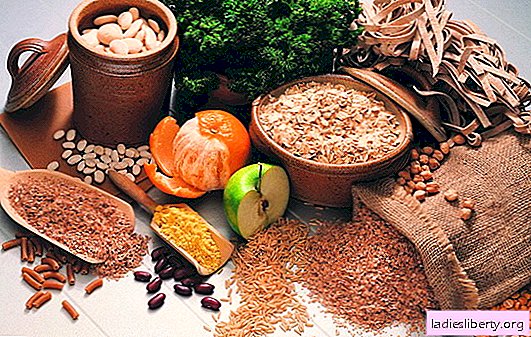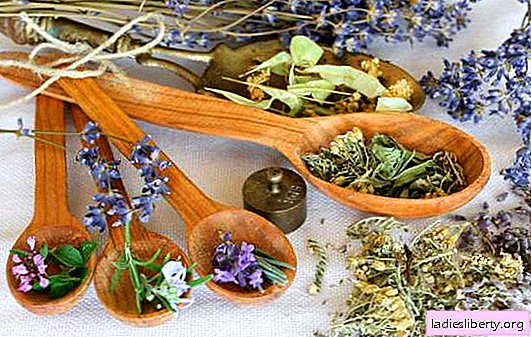
One of the most effective siderates is barley. It is planted both in winter and in spring, the grains of this crop sprout quickly and frosts are not afraid of well-rooted seedlings.
In addition, these are winter crops that, when planted in autumn, can be used in spring. Barley is undemanding to growing conditions, but it is strongly affected by the nutritional value of the soil.
This culture perfectly structures the soil, destroys many species of weeds and in the spring quickly forms a green mass. In addition, barley has a special property - in comparison with other cereals, it perfectly withstands drought. For this reason, it is advisable to grow barley in arid regions like siderat. is he perfectly develops with early spring landing, with winter sowing, it can withstand, without shelter (without snow) a temperature drop of up to 5 degrees below zero. The consumption of seeds per 100 m2 is 1.8-2 kilograms. You can mow the green mass of barley 1-1.5 months after sowing.
The roots buried in the soil and the vegetative mass of barley inhibits weed growth and development. The greens of this culture contain as many minerals as animal waste. In the soil, barley decomposes quickly and immediately supplies the plant with essential nutrients. With the greenery of this crop on the plot many beneficial microorganisms develop. In addition, it reduces acidity, increases the permeability and moisture capacity of the soil. The beneficial influence of this sideral culture lasts for 4 years.
Barley Growing Conditions
Temperature. Seeds can be sown in early spring after the soil warms up a fraction of 1-2 degrees of heat, viable seedlings form at 4-5 degrees of heat. But at these temperatures, the appearance of seedlings is prolonged, the most suitable growth temperature is 15-20 degrees. Barley, sown in the winter, does not tolerate poorly snowy winters with large frosts, stagnant waters and sharp spring temperature changes.
Shoots not covered by snow withstand short-term frosts up to 8 degrees. In the later stages of growth, resistance to low temperatures decreases. Adult barley is damaged by frosts of 1-2 degrees, if a grain has formed, then it is unsuitable for making beer.
Humidity. Barley - better than other spring ones withstands drought. But moderate temperatures and normal humidity contribute to the formation of many shoots. This crop requires the most moisture during exiting and earing. In arid conditions, it forms more grain, but due to a weak root system there is less green mass.
Landing place
The most important condition for obtaining a large amount of barley is the choice of predecessors suitable for this culture. During the cultivation of winter barley, rapeseed, early potatoes, and peas showed themselves well. For spring crops, crops that leave a lot of nitrogen in the soil are best suited. Fertilizers of organic origin are applied to the soil only with its low fertility, most often they sow barley after row crops requiring top dressing with fresh manure. Mineral fertilizers are favorable for both spring and winter barley, potash and phosphorus fertilizers are applied during autumn plowing of the soil, nitrogen fertilizers during pre-sowing cultivation.
Subspecies of barley
Varieties of barley - multi-row, two-row and intermediate.
In a multi-row variety of culture, grains are formed in all spikelets. There are two groups of this subspecies:
1. With six-row correct grains;
2. With the wrong ones.
Spikelets of the first type are hexagonal, dense and solid, of the second type they look like a quadrangle and are located a little incorrectly.
Two-row barley became so called for the reason that one of the three spikelets is female, and a grain is formed from it. "Male" spikelets outwardly only flakes. The cultivation of barley of this type is practiced in large areas, the appearance of the spike can be seen in the photo.

An intermediate subspecies of culture grows 1-3 spikelets, the final number of grains depends on this.
Most often grown multirow barley.
Barley sowing
Winter barley is grown, usually in areas with a mild climate. Its main advantage is a short period from sowing to harvest, it lasts 2-4 months. For this reason, after it is possible to grow crops with a short growing season. Or this site will be able to "rest" more time, which will allow it to be better prepared for the next season. Seeding dates are calculated taking into account the variety and climatic conditions of the region. For him, it is important not only the sowing place, but also the weather conditions of the planting area. Most often, the planting period of this crop is the second decade of September.
Barley will grow well after crops such as legumes, sunflowers and fodder herbs. After growing the previous plant, the plot needs to be zaronirovany to a depth of 7-10 cm to process the remaining weeds and roots of the previous "owner".
Seed is pre-sorted. Seeds intended for sowing are treated with substances that destroy pathogenic microorganisms. Sowing is carried out with seeders, after which it is necessary to roll the soil. In late autumn, if some snow falls, perform operations to destroy rodents and snow retention. After the snow melts in the spring, the plot is fertilized and sprayed with compounds intended for the extermination of weeds.

Spring barley - a cereal plant that can grow very quickly. It is attributed to crops that require very early sowing in the spring. If you delay the start of work for 2-3 days, you can lose a large amount of the crop. The soil is prepared for him in the same way as before sowing winter barley. Sow seeds in a narrow-row or ordinary way. Only for this culture reduce the free space between the rows. For the friendly appearance of seedlings, it is necessary to sow them in moist soil, the plot is rolled into the same depth after sowing without fail. If this operation is not performed, then individual plants will appear earlier, others will hatch, they can sit in the ground even before the first rain.
Before sowing, the seed material is treated with compounds from diseases and pests and the seeds are sorted.
Spring barley is sown very early - this can happen even in February, so weeds do not pose a great danger for it - break through and grow, they just do not have time. But when sowing at a later date, it is necessary to carry out work on weed control. During the development of barley, it is advisable to feed crops with mineral fertilizers.











